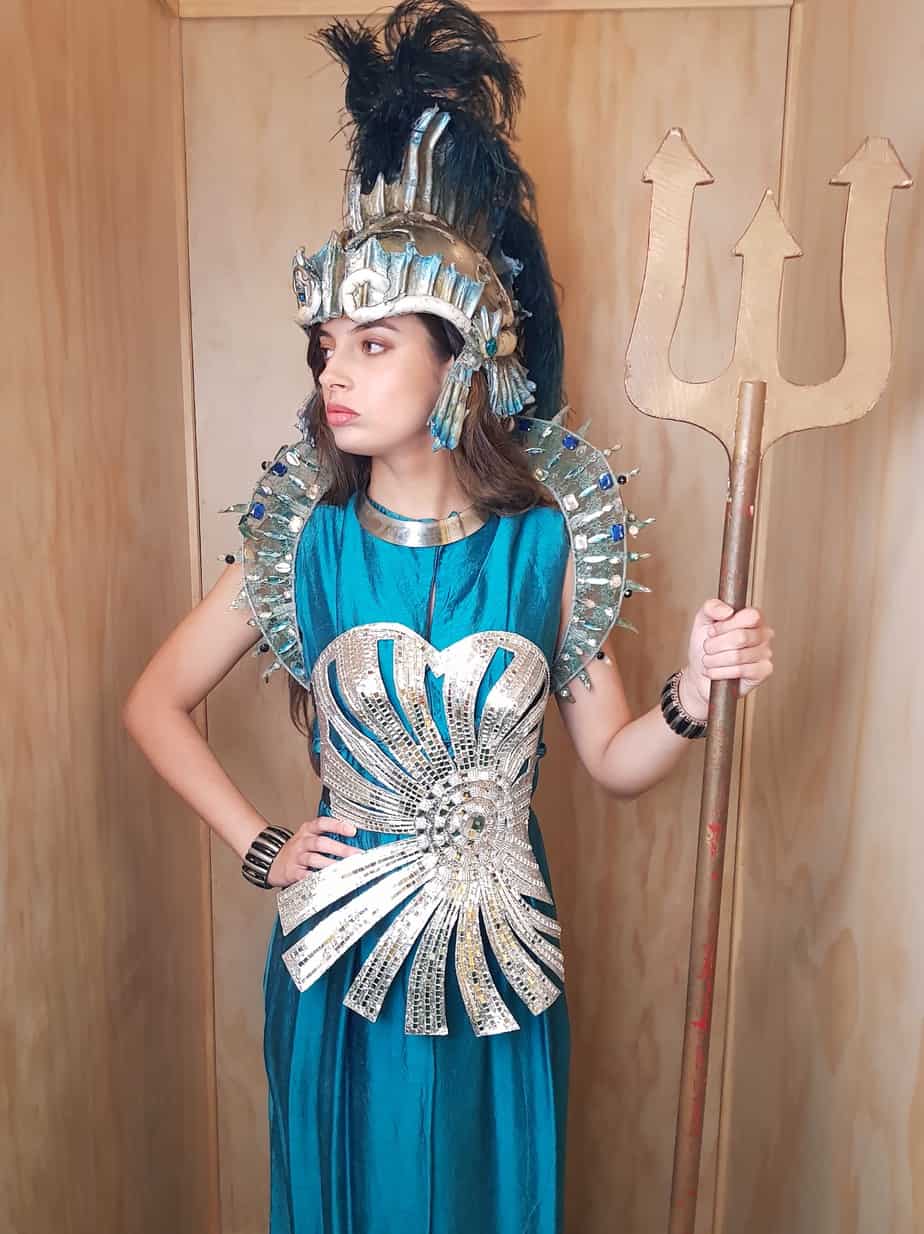The intricate tapestry of mythology often intertwines with the fabric of spirituality. As we explore the rich heritage of Greek mythology, we encounter Amphitrite, the Goddess of the Sea, alongside a pantheon of other oceanic deities. This exploration provides an intriguing lens through which to examine the nuances of faith, culture, and the human condition. But herein lies a playful question: How do the conceptions of divinity in Greek mythology resonate with or challenge Christian perspectives, particularly regarding nature, creation, and the divine? This inquiry unfurls an opportunity for deeper reflection on both ancient and contemporary beliefs.
Amphitrite, a notable figure among the Greek pantheon, embodies the complexities associated with the sea. She is often depicted as a serene and nurturing figure, ruling over the vast and tumultuous waters. Unlike the capricious and vengeful sea gods, Amphitrite possesses a stabilizing presence. Her marriage to Poseidon, the more tempestuous god of the sea, symbolizes the balance between chaos and order. In this union, we perceive a powerful metaphor that can mirror Christian understandings of God’s sovereignty over creation, despite the existence of chaos and disorder.
In light of Amphitrite’s benevolence, we can draw parallels to the Christian belief in divine providence. The sea, in many cultures, represents not only danger but also beauty and bounty. In Christianity, one finds the motif of Jesus calming the storm—a direct demonstration of divine control over nature. Here lies a challenge: How does one reconcile the often fearful and awe-inspiring natural world with a personal, loving God? The attributes ascribed to Amphitrite may offer insight, as they dignify the majesty of creation in its vastness while also evoking compassion.
Expanding the discussion to other ocean deities, we encounter figures such as Triton, the messenger of the sea, and Oceanus, the embodiment of the ocean’s vast expanse. Each deity contributes to the larger narrative of the ocean’s significance in the human experience. In Christian theology, the sea can symbolize the unfathomable depths of God’s wisdom and might. Psalm 69:1 states, “Save me, God, for the waters have come up to my neck,” illustrating the sense of desperation and yearning for divine intervention amidst overwhelming circumstances, echoing both Greek and Christian themes of seeking refuge in the divine.
The concept of restoration found in Amphitrite’s character invites considerations of reconciliation and healing. In Christian doctrine, the process of sanctification becomes central—an ongoing journey of transformation from chaos to harmony. This transformation, much like Amphitrite’s gentle calibration of the ocean’s tumult, posits the potential for a gracious interaction between creator and creation. The ancient Greeks recognized the duality of nature, and this notion can augment a Christian understanding of the world as a space where divine power harmonizes with human frailty.
We may also examine the interplay of mythology and morality. Amphitrite, though not as tempestuous as her husband Poseidon, nevertheless commands respect and reverence. Her role can be likened to the Christian understanding of stewardship over creation. Are we, as stewards of the earth, to act with reverence similar to the respect Greeks afforded their deities? The call to stewardship provokes critical reflection: In what ways do contemporary environmental crises illustrate our neglect of this sacred duty? A playful challenge emerges for individuals and communities alike—how can we embody the virtues reflected in Amphitrite by nurturing rather than dominating creation?
As we ponder these relationships, it is vital to recognize the shifting roles of women in both Greek mythology and Christian texts. Amphitrite stands as an embodiment of feminine strength and wisdom, paralleling figures such as Mary, the mother of Jesus, who also represents nurturing grace amidst profound challenges. This juxtaposition raises profound questions. How does the portrayal of feminine divine figures transcend cultural boundaries, and what does this signify for gender roles within religious contexts? Are we willing to embrace the multiplicity of divine expressions when grappling with our identities as both stewards and devotees?
The narratives surrounding Amphitrite and her contemporaries are not mere stories of deities; they contain wisdom about humanity’s relationship with the divine and the natural world. Amphitrite’s calming presence amidst the chaos of Poseidon’s storms serves as a reminder of balance—a balance that must be pursued in all aspects of life, including our stewardship of the environment. The invitation remains: as we navigate the turbulent waters of modern existence, how can we emulate the divinity represented in such narratives, embracing a harmonious relationship with creation?
In conclusion, the exploration of Amphitrite and her kin within the framework of Christian perspective unveils a rich dialogue of faith, nature, and humanity’s intrinsic relationship with the divine. As we acknowledge the beauty and depth of both Greek mythological traditions and Christian beliefs, may we strive to cultivate a deeper understanding of our roles as caretakers of creation, guided by the virtues encapsulated in both ancient narratives and sacred scripture. The ocean, with its depths and mysteries, continues to invite humanity into its embrace, challenging us to seek harmony and wisdom in our own earthly pilgrimage.



